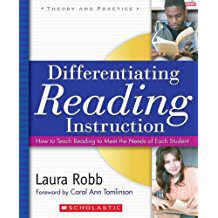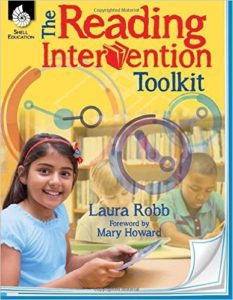Surefire Tips for Maximizing Reading Stamina
I have just invited eighth grade students to select books and find comfortable places to read them. During the first ten minutes, Adam does everything in his power to avoid my request. He goes to the bathroom, gets water from the fountain in the hall twice, sharpens a pencil, considers three books, chooses none, and instead, hastily leafs through a magazine. Clearly, Adam has a lot of energy. He also has the ability to concentrate while playing sports and talking to friends. But invite Adam to read, and he becomes exhausted after ten minutes, often complaining that his eyes and head hurt. These are all common symptoms of students who lack the stamina to read for extended periods of time.
Reading stamina is having the energy and the concentration to focus on reading for at least thirty continuous minutes a day. For students who lack stamina, reading is a frustrating and unpleasant experience, so they tend to read as little as possible. However, today, reading is a life skill needed for college and career success, as well as for the joy that a personal reading life brings. The good news is that you can help students boost their reading stamina at school and at home by using the ten tips that follow.
Have students start small. Have them gradually build stamina by reading self-selected books in five-minute intervals–then ten minutes, and so on, until they reach one hour. Remind students that developing reading stamina is like training to run a mile in less than ten minutes. Both require regular practice to increase energy and concentration.
The Surefire Tips for Maximizing Reading Stamina
- Value Independent Reading. At school, this means setting aside twenty minutes at least three times a week for students to read self-selected books. Teach students how to choose books that they can read with ease by showing them the two- finger method. Students read a page in a text. If they encounter more than two words they can’t pronounce or whose meaning they can’t figure out from context, they save the book for another time and choose a different one. Teaching students to choose books that are accessible and enjoyable will also motivate them to read at home.
- Use Classroom and School Libraries. Students of all ages need access to books. Seventh-grader, Lucas, put it this way, “ Having a classroom library means I can find a book when I need one right away.” Continually work on enlarging your classroom library: Aim for 1,000 to 2,000 books at a variety of levels, on a range of topics, and in multiple genres.
Schedule a weekly school library visit for your students—and be sure to accompany them so you and your librarian can suggest great reads. If your classroom library is still a work-in-progress, encourage students to check out several books whenever they visit the school library and store them in their class cubbies or lockers, so they have enough to read until their next library visit.
- Read Self-Selected Books. Educators such as Donalyn Miller, Richard Allington, and Steve Krashen agree that choosing their own books is the key for students to become motivated to read at home and in school.
- Diminish Distractions. Reading is social. There will be times that a student wants to share something he or she just read which is terrific because it shows engagement with the text. But it can also be distracting to classmates. So encourage students to use a soft voice while sharing with a classmate. Keep the door to your room closed to diminish noise from the hallway. The fewer distractions, the easier it will be for students to concentrate.
- Create Comfortable Reading Spaces. Think about the places at home where you read. Most likely it’s in a comfortable chair, on an oversized pillow, or in bed. Visit a carpet store and ask the owner to donate small remnants that students can sit on while reading. Carpet remnants are easy to store; they can be stacked in a corner or closet. Avoid requiring students to read for pleasure sitting at their desks. Instead, invite them to find a comfortable space in the classroom. Some will sit under desks or lean against the wall. If you have a limited number of beanbag chairs and large pillows, create a rotation system so students take turns reading on them.
- Advertise Great Reads. Students respect and value suggestions from peers. So set up systems that foster sharing book suggestions. Here are three:
- Teach students to book talk and have them present a talk each month. The benefit of consistent book talking is huge! Over ten months, a class of twenty five students will hear about 250 books from peers.
- Set up a graffiti wall by posting a large piece of construction paper on a bulletin board. After completing a book that they enjoyed, have students write the title and author on the graffiti wall and one sentence explaining why they enjoyed the book so much. Then, a few times a week give students several minutes to browse the graffiti wall to discover peer-recommended books.
- Teach students to give a 60 second elevator talk about a book they enjoyed reading. Their goal is to convince peers to read it. When a student’s desire to present an elevator talk strikes, schedule it during that class or as soon as possible.
- Set Monthly Goals. Share with students the research findings by Donalyn Miller and Steve Krashen–that reading 40 books a year independently can ramp up their reading achievement by enlarging their vocabularies and expanding their knowledge base. Negotiate monthly reading goals with students to help them meet the 40-book challenge. Books of 500 or more pages should count as two to three books. Students who can read books of that length presumably have stamina, and you want to encourage them to continue reading long and complex texts.
- Take Brain Breaks. A seventh grade class lobbied their teacher for “brain breaks”– time to chat and stretch after they had been reading deeply for thirty minutes. Brain breaks offer students a few minutes of down time to relax, re-energize, and yes, gain stamina. Tell students that when they plan to read at home for an hour or more, they should take a break, walk around, have a snack, and then return to reading.
- Hold Small-Group Discussions. Organize into small groups students who have completed different books that are in the same genre. Students discuss such things as literary elements in fiction or text features and structures in informational materials. As such, they not only expose their peers to a range of reading materials within a genre, but they also tend to become better at clarifying their thoughts and become more reflective when they share their thinking.
- Have Students Self-Evaluate. Four times throughout the year ask students to review their reading logs and reflect on the number of books they completed, favorites books, books they reread, and the amount of reading they completed at home. Then, ask students to use their self-evaluations to set reasonable independent reading goals which might include: extend reading time at home by fifteen minutes, read longer books, try a different genre, add a book to the graffiti wall, or read other books by a favorite author.
You can also give students a checklist to measure their reading stamina as part of their self-evaluation.
My Reading Stamina Checklist
Name_______________________________Date___________________
Checklist for Evaluating Reading Stamina: check items that apply to your reading.
____I quickly found a comfortable space to read.
____I concentrated on my reading and met my goal of _____minutes.
____I read for_____minutes beyond my goal.
____I can read and concentrated for all of silent reading time.
____I read without jumping up, getting a drink, or moving around the room.
____If I was distracted, I worked hard to avoid distracting others.
____I recognized I was distracted and was able to return to my reading on my own.
____I have a reading stamina goal and use it to increase the amount of time I read deeply at school and at home. [end checklist]
Final Thoughts
Showing students how to self-select “just right’ books is a giant step toward improving students’ reading stamina. Choice creates engagement and engagement nurtures students’ desire to read. As they improve their stamina, commend students. Celebrate small but consistent improvement as well as big improvement. Keep in mind that all students will not improve their reading stamina at the same rate. In fact, some students might need more than one school year to be able to read for long periods of time. That’s okay. Coordinate your efforts with other teachers, celebrate progress, and give students the gift of time.
Learn more about Laura’s ideas on reading- check out- Teaching Reading in Middle School
![]()










